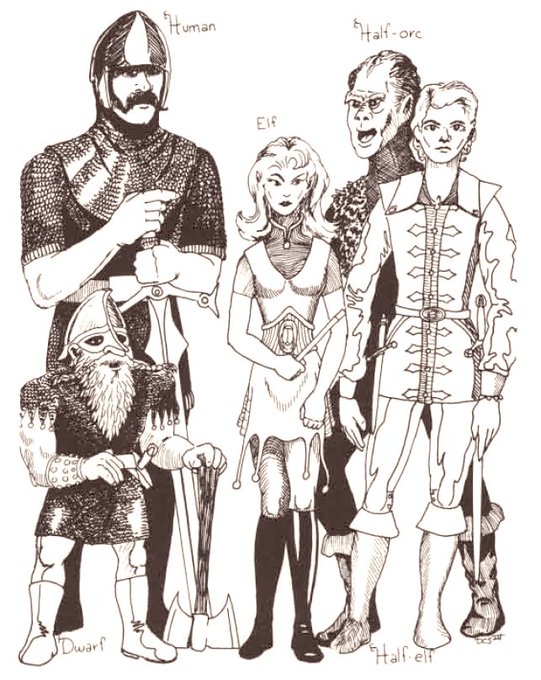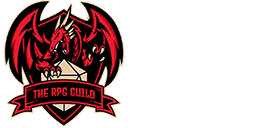How to Make Your First D&D Character
Creating a character is easier than you think.

Some people will create their first D&D character after their favorite LOTR, Twilight, Harry Potter or another movie character that inspires you. But if you’ve never played before, how would you know what kind of character to create? So to get started, I recommend you embrace the race and attributes of who your character will be. Once you choose a race, choose a class – their purpose or role in D&D, and then start rolling those d6s for ability scores.
Which race to choose?
- Human
- Elf
- Half-Elf
- Dwarf
- Halfling
- Half-Orc

These were the original races you had the option of choosing back in the first edition.
With Dungeons and Dragons 5e you have almost unlimited options to the race of your character, assuming your DM will approve of your choice. Some of the newer and popular races include:
- Dragonborn – Player’s Handbook
- Gnome – Player’s Handbook
- Aasimir – Volo’s Guide to Monsters
- Firbolg – Volo’s Guide to Monsters
- Goliath – Volo’s Guide to Monsters
- Kenku – Volo’s Guide to Monsters
- Lizardfolk – Volo’s Guide to Monsters
- Tabaxi – Volo’s Guide to Monsters
Of course, there are many more races to play in many of the other additional books but a majority of the character races are included above. You want to play a monster, you can do that with DM’s permission, kobolds, orcs, bugbears, centaurs, all can options but each have their own pros and cons. For the sake of this blog post I’m going to keep it to the races above.
You’re creating an adventurer and in Dungeons and Dragons, that is called a ‘class’. A class is defined as what your character can do. Do you want to be a brave warrior who is skilled in hand-to-hand combat? Choose a Barbarian, Fighter or Paladin? Want to cast spells that solve problems and protect your party, your group of adventuring friends? Then choose a spellcaster Wizard, Sorcerer, Warlock, Druid or Cleric? Want to bring something different to the party then choose Ranger, Monk, Rogue or Bard.
Every good party needs balance – recommended classes:
- A fighter (ranger, barbarian, paladin) – live to fight, wear armor and wreck havoc
- A cleric – healer, wear armor, good vs. undead
- A wizard (sorcerer, warlock, druid) – when brawn is not enough, rely on magic
- A rogue – detect traps, stealth movement, pick locks
I covered my definition of a balanced party in this post, but most classes these days allow for some spellcasting but each class has its pros and cons. Want to be a jack-of-all-trades and really get into roleplaying then Bard is the class to choose. Want to be the party’s meat shield and rage against the BBEG then choose a Barbarian. The main goal of making a character is to have fun help your party succeed on their quests.
You’ve picked your race and your class – now it’s time to break out those new dice and get to rolling your ability scores. Each character has the same base abilities:
- Strength: Natural athleticism and physical power. Important for fighters, you’ll want to have high strength if you use melee weapons (things you hit monsters with hand-to-hand) or want to use heavy armor.
- Dexterity: Agility, reflexes, balance and poise. Important for characters with ranged attacks (things you throw or shoot at monsters) or who don’t want to be hit.
- Constitution: Health and stamina. Important for everyone. Constitution determines how much damage you can take before you pass out or die.
- Wisdom: Awareness, intuition and insight. Wisdom increase spell effectiveness of divine spellcasters like clerics.
- Intelligence: Mental acuity, information recall and analytical skill. Intelligence increases spell effectiveness for wizards.
- Charisma: Confidence, eloquence and leadership. Charisma helps determine how well a character can bluff, charm or otherwise manipulate others. Charisma is important for spontaneous spellcasters like sorcerers and warlocks.
Each of these allows you to act out your character and perform the special skills that are attributed to your class. The ability scores are modified based upon the race you chose, a list of increases to add to what you rolled is on page 12 of the PHB.
How do you roll your ability scores? Roll a d6 (6-sided dice) 4 times for each and drop the lowest roll. There are other ways to determine ability scores but this is how I roll.
Congratulations – you made your character, now you need to pick your background, write your backstory, pick your equipment, armor, weapons, spells and other attributes and you’re ready to go on your first adventure.
Final Important Stats
Hit Points (HP): Your life. The amount of damage your character can take before dying.
Experience Points (XP): What you get for defeating monsters and completing adventures helps you level up. The higher your level, the more hit points, abilities and spells you get.
Level: Everyone starts their character at level 1 and gains a level when they accrue enough experience points.

Appreciate it for this howling post, I am glad I discovered this website on yahoo.
You ought to take part in a contest for one of the most useful blogs on the internet. I am going to highly recommend this web site!